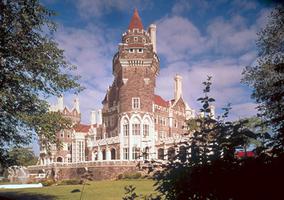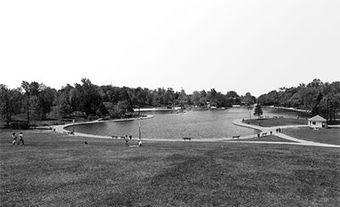Edward James Lennox
Edward James Lennox, architect (b at Toronto 1854; d there 15 April 1933). One of Canada's pre-eminent interpreters of Richardsonian Romanesque, Lennox was a formidable force in the up-building of Toronto. He studied architectural drawing at the Mechanics' Institute in Toronto and apprenticed with Toronto architect William Irving (1813-83). Irving's highly sculptural style had a considerable impact on the young Lennox.At age 22 Lennox entered into a partnership with William Frederick McCaw. Their commissions ranged from commodious villas to large neo-Gothic churches and a first-class hotel (now unfortunately demolished) on Toronto Island for the world-famous Canadian rower Ned HANLAN. By 1881 Lennox was on his own and within four years his practice was reputed to be one of the largest of its kind in Canada.
In 1886 Lennox won the competition to build what is now known as Toronto's Old City Hall (1887-99). To satisfy the City Building Committee that "their" building would be as good as if not better than its American counterparts, Lennox travelled to a number of principal cities in the eastern United States. He did not refer in name to H.H. Richardson's (1838-86) Allegheny County Courthouse in Pittsburgh, Penn (1884-88), but indicated that Pittsburgh was the only city that had a building somewhat similar in appointments to his. Old City Hall, clearly Richardsonian Romanesque, took more than 11 years to complete and resulted in not one but two legal disputes.
By the early 1900s Lennox's flamboyance and able self-promotion was at its zenith. He managed to capture the imagination of such venture capitalists as George Gooderham and Sir Henry PELLATT. For Gooderham and confederates, Lennox modified and augmented the design for the King Edward Hotel (1900-02), originally prepared by prominent Chicago architect Henry Ives Cobb (1859-1931). For Pellatt, Lennox designed the Neo-Renaissance Powerhouse, Niagara Falls (1904-12), and the well-known and much-visited Casa Loma (1909-13). Both are characteristic of Lennox's free-wheeling approach to architecture.
Of the 40 or so known works by Lennox that have not been mentioned, the following extant examples should be noted: the Massey Manufacturing Company Office Building, 710 King Street West. (1883); 37 Madison Avenue (1886); the Milburn Building, 47-55 Colborne Street (1886); The Toronto Athletic Club, 147 College Street (1890); Massey Mausoleum, Mount Pleasant Cemetery (1892); Bank of Toronto, 205 Yonge Street (1905); the west wing of Ontario's Legislative Building, Queen's Park (1909); St. Paul's Anglican Church, Bloor Street East (1909-13); Excelsior Life Insurance Company, 36 Toronto Street (1914); and Lenwil, residence of E.J. Lennox, 5 Austin Terrace (1913).

 Share on Facebook
Share on Facebook Share on X
Share on X Share by Email
Share by Email Share on Google Classroom
Share on Google Classroom




